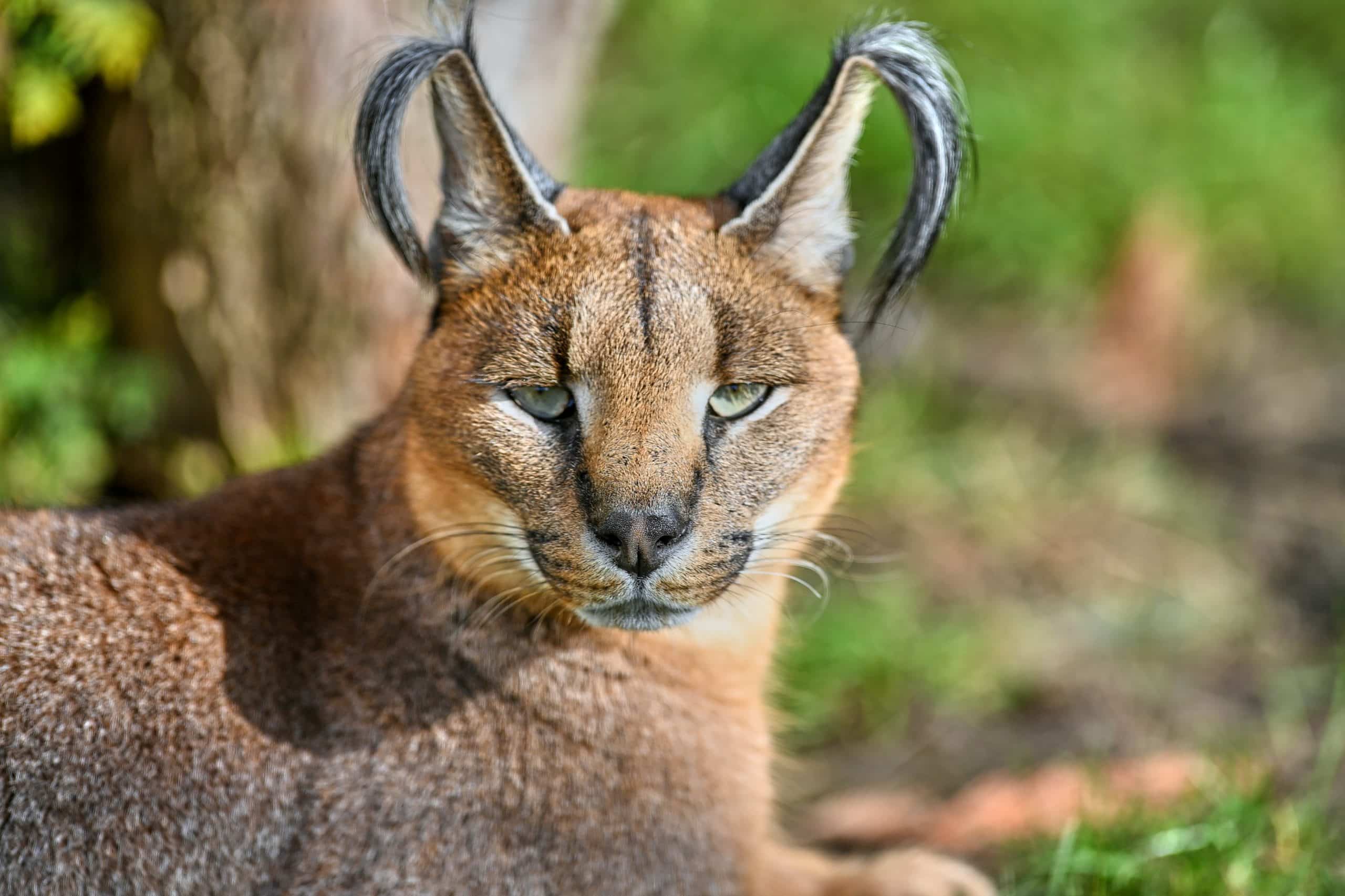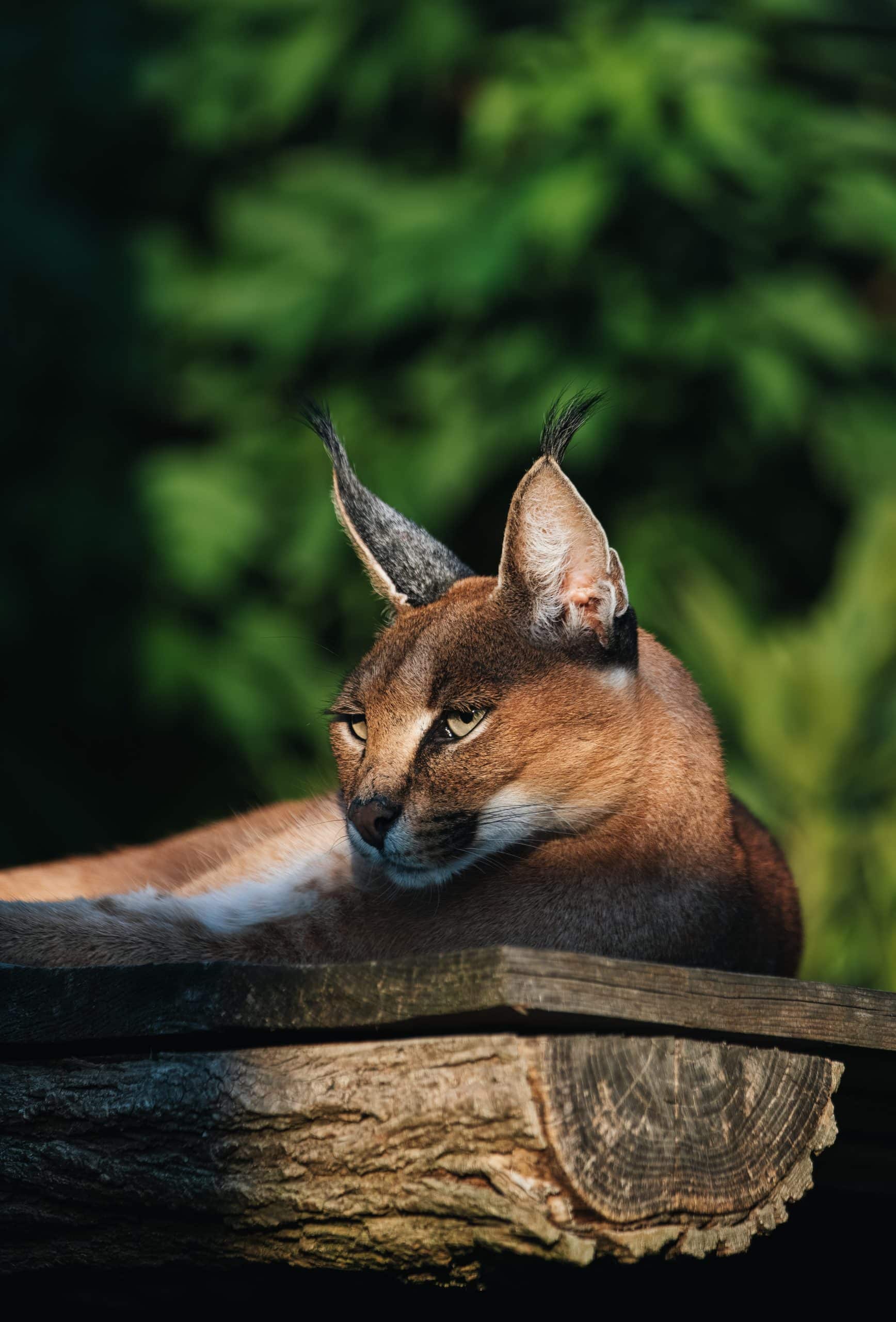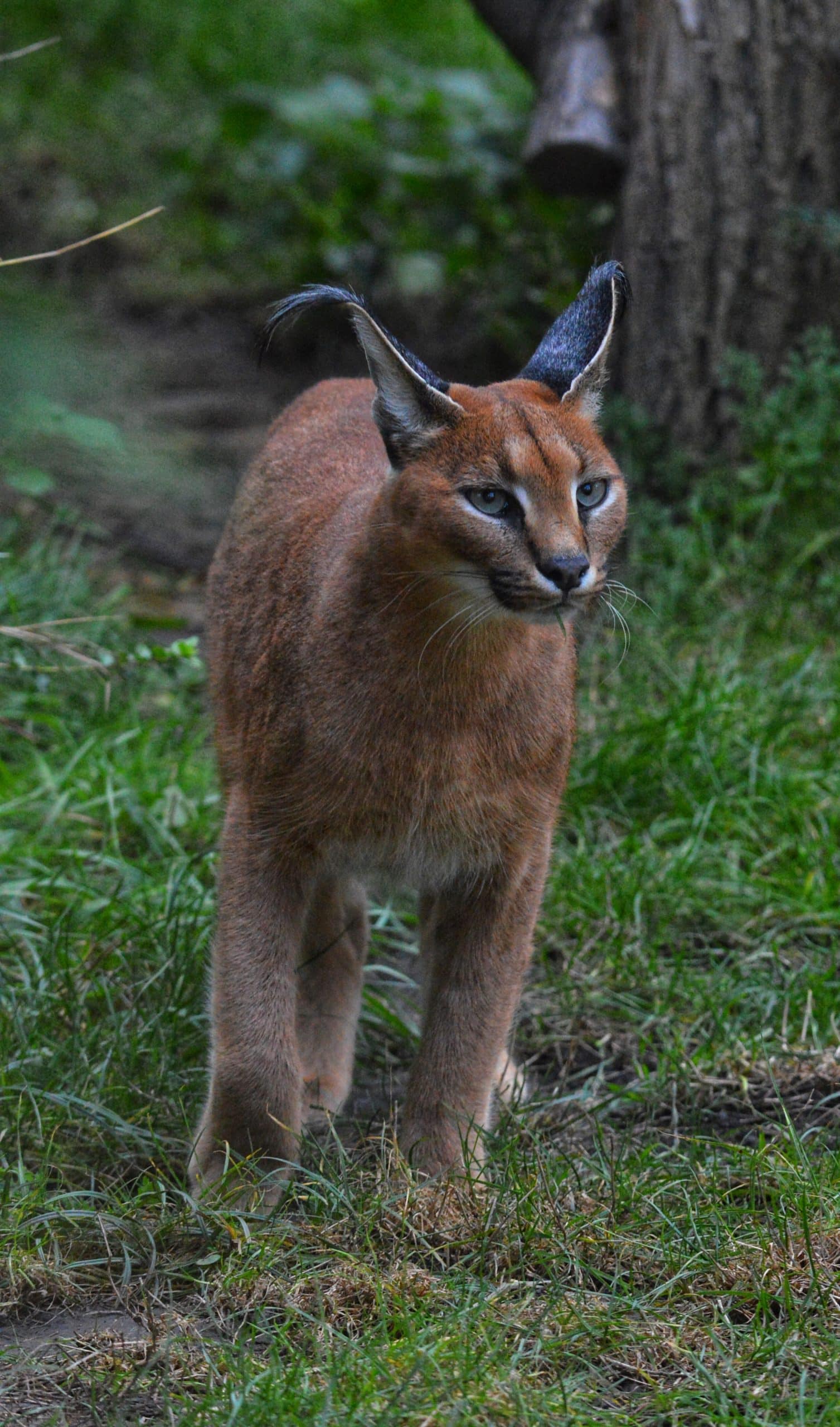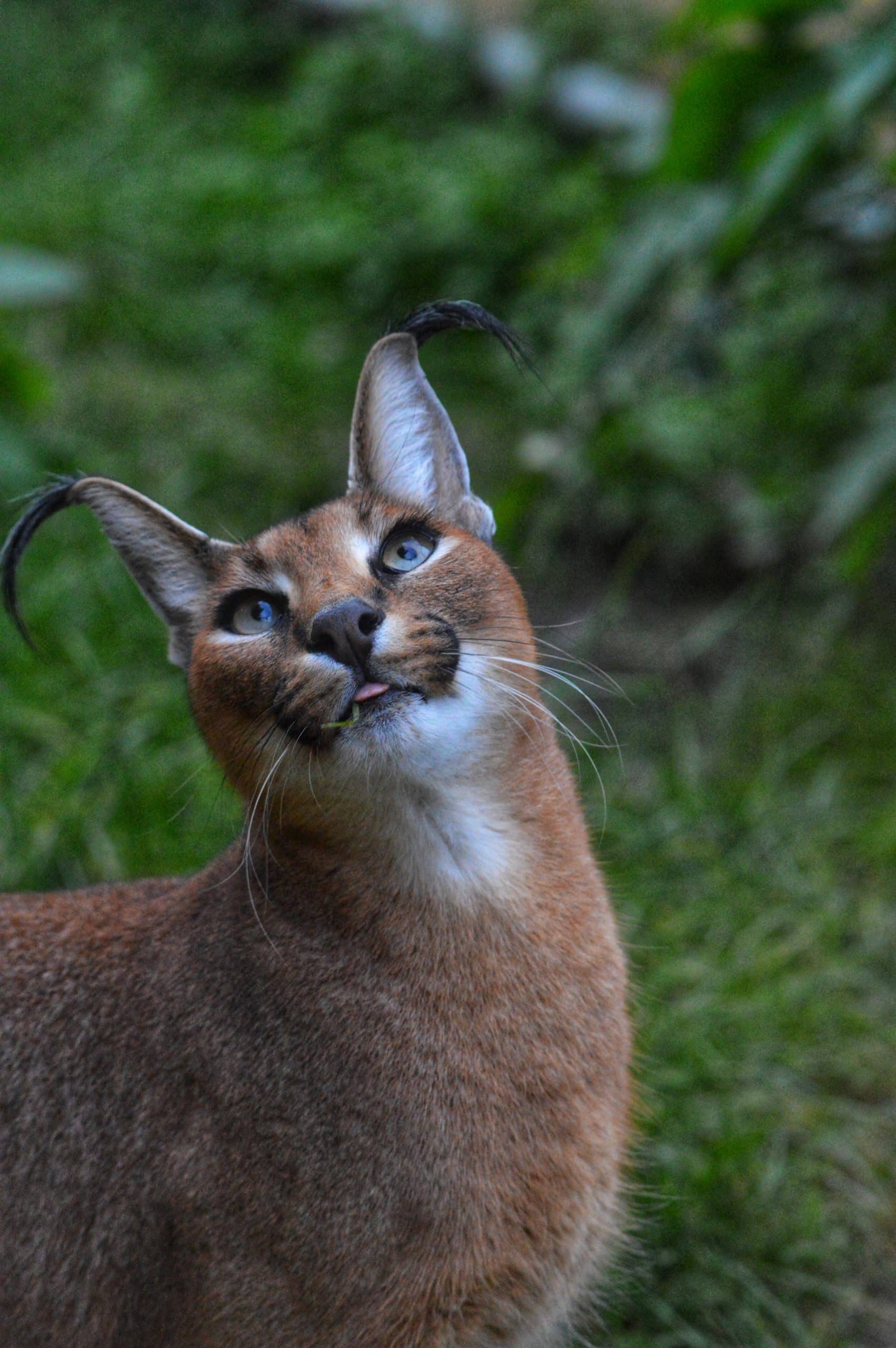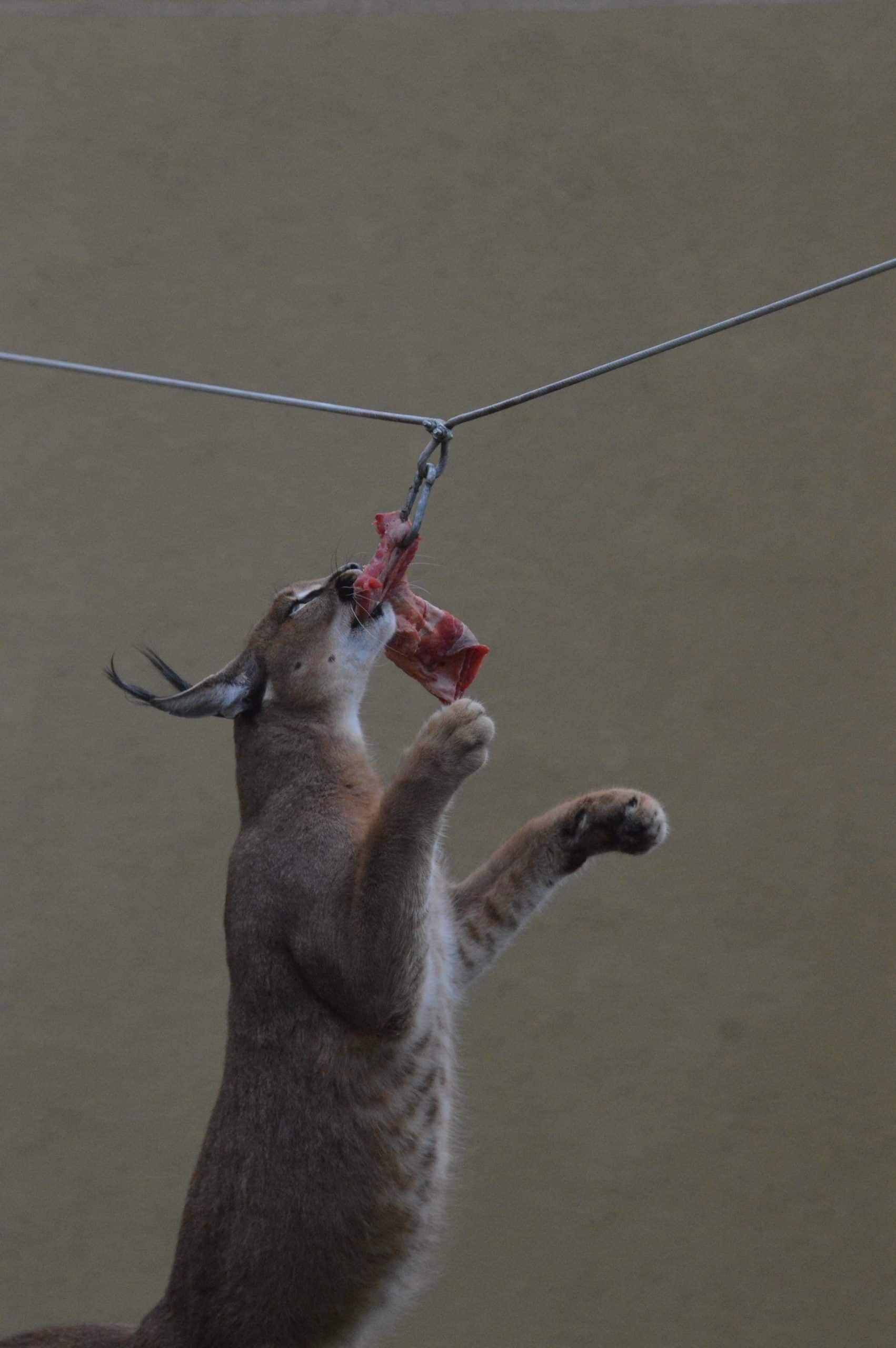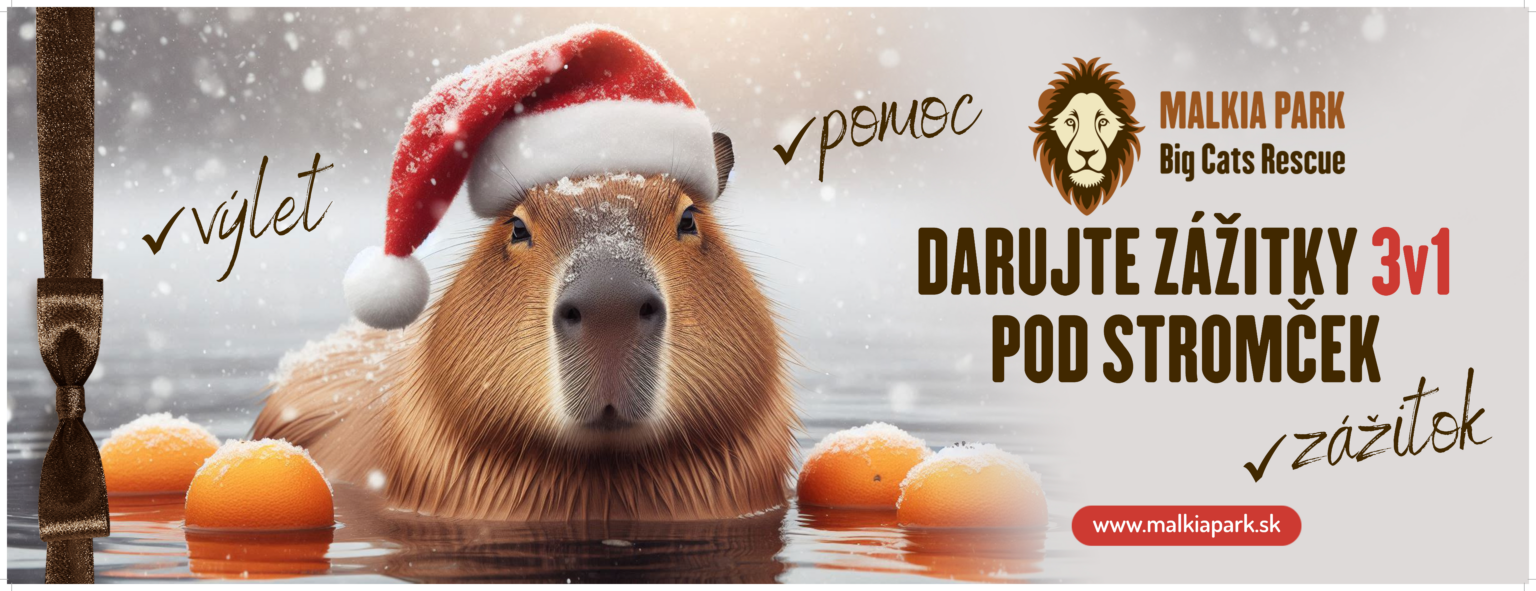The caracal lynx is a long-legged, slender feline that lives in dry areas. Its fur is smooth, the color depends on the environment in which the caracal lives. It is mostly in shades from sandy to reddish brown. The fur is unusually thick to protect the animal from the cold at night. He has noticeable long bristles on his ears. They use their ears as a means of communication. Dropped ears mean a threat.
They are solitary territorial hunters, except when the female is accompanied by her cubs. It lives in dry scrubby desert areas, preferring stony areas. It climbs well and is faster than most felines.
Partners must first get used to each other before mating occurs. The female takes care of the cubs and they are blind for about ten days. They start receiving solid food only after two months and stay with their mother for another ten months. They leave their mother in one year.
Its name is derived from the Turkish word karakulak, which means “black ears”.
It locates its prey mainly by hearing and sight.
They are hunters that stalk and chase or chase and sprint, and are considered among the fastest of most cats in short-distance sprint situations.
The caracal is capable of jumping up to 3 meters high, knocking down flying birds.
They need a really small amount of water for their life and they get almost all the water from the body of their prey.
In India and Iran, they were used for hunting animals in the past.
In pursuit of an exotic look for a pet, people crossed a caracal and a domestic cat, creating a hybrid called a caracal.


